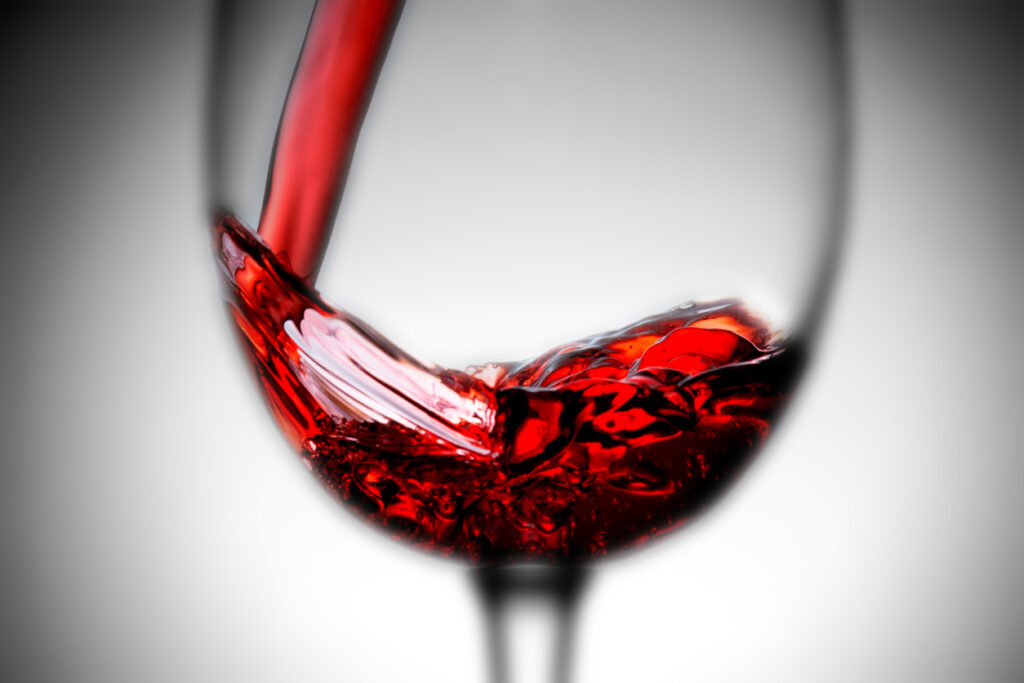Italy, known for its rich culture and exquisite cuisine, is also home to some of the world’s most renowned wine regions. With a history dating back thousands of years, these regions have been perfecting the art of winemaking, resulting in a diverse range of distinctive flavors and styles unique to each area. From the rolling hills of Tuscany to the volcanic soils of Sicily, Italian wine regions offer an incredible variety of wines that continue to captivate and delight wine enthusiasts and casual drinkers alike.
Among Italy’s many wine-producing regions, some of the most prominent include Tuscany, Piedmont, Veneto, and Sicily. In Tuscany, the picturesque landscape is dotted with vineyards producing the highly-praised Chianti, Brunello di Montalcino, and Super Tuscan wines. In the northern region of Piedmont, the elegant Nebbiolo grape takes center stage, resulting in the sophisticated and complex Barolo and Barbaresco wines. Veneto, which lies in the northeastern part of the country, is best known for its light and crisp Prosecco, as well as the robust Amarone. Meanwhile, the island of Sicily offers a diverse range of wines thanks to its unique terroir, with notable varieties including Nero d’Avola and the volcanic Etna Rosso.

Exploring the Italian wine regions not only provides an opportunity to learn about the country’s rich winemaking history and sample some of the finest wines in the world, but also offers a chance to connect with the passionate people who have dedicated their lives to this age-old craft. As you enjoy the fruits of their labor, become immersed in the landscapes that have inspired and nurtured these exceptional wines, and experience Italy’s wine country in a truly unforgettable way.
Italian Wine Regions Overview
Italy is home to some of the world’s most famous wine regions, producing a diverse range of wines thanks to its unique geography and climate. This overview will guide you through Italy’s wine regions, exploring the characteristics of each area and the different grape varieties grown.
Northern Regions
The Northern Italian wine regions produce some of the most well-known wines, and the area is divided into three primary regions: Piedmont, Veneto, and Lombardy.
- Piedmont: Known for its complex and age-worthy red wines such as Barolo and Barbaresco, made from the Nebbiolo grape variety. Piedmont also produces Moscato d’Asti, a sweet and slightly sparkling white wine.
- Veneto: This region’s wine production focuses mainly on white varieties like Soave and Prosecco, as well as the red empire-builder Valpolicella and Amarone, made from the Corvina grape variety.
- Lombardy: Famous for its sparkling wine Franciacorta, which is made using the traditional Champagne method, as well as red wines from the Valtellina region made with the Nebbiolo grape variety.

Central Regions
The Central Italian wine regions hold famous appellations such as Tuscany, Umbria, and Marche. These regions produce some of Italy’s most iconic and sought-after wines:
- Tuscany: Renowned for its popular Chianti and Chianti Classico wines made from the Sangiovese grape variety, Tuscany also boasts Brunello di Montalcino and the Super Tuscan blends that often feature Cabernet Sauvignon, Merlot, and Syrah.
- Umbria: This region offers rich and full-bodied red wines made from the Sagrantino grape variety, as well as the crisp, mineral-driven white wine Orvieto, made predominantly with the Trebbiano grape.
- Marche: Known for its Verdicchio white grape variety, which provides refreshing and citrus-driven wines. Marche also produces medium-bodied red wines made from the Montepulciano grape.
Southern Regions
The Southern Italian wine regions feature warm temperatures and abundant sunshine, creating the perfect environment for producing full-bodied and ripe wines. Some of the main regions in the south include Campania, Puglia, and Sicily.
- Campania: This region produces bold red wines made from Aglianico, such as Taurasi, as well as zesty white wines like Falanghina, Fiano, and Greco.
- Puglia: Known for its red wines like Primitivo and Negroamaro, Puglia also produces exquisite and full-flavored rosé wines called Rosato.
- Sicily: Offering a wide range of wines, Sicily is known for the indigenous grape variety Nero d’Avola, which produces fruity and robust red wines. The island also produces unique white wines made from Grillo and Catarratto grape varieties.

Main Grape Varieties and Wine Styles
Red Wines
Italy is home to numerous red grape varieties and wine styles. Some of the most notable include:
- Sangiovese: Typically grown in Tuscany, Sangiovese is the primary grape in the famous Chianti and Brunello di Montalcino wines. These wines are characterized by their high acidity, medium body, and red fruit flavors, as well as earthy and savory notes.
- Nebbiolo: Hailing from the Piedmont region, Nebbiolo is the main grape in Barolo and Barbaresco wines. These wines tend to be full-bodied with high acidity and tannins and exhibit flavors of red cherry, rose, and truffle.

White Wines
Italian white wines encompass various styles and regions. A few key examples are:
- Pinot Grigio: It originates from the northeastern regions of Veneto and Friuli. Pinot Grigio is a light-bodied white wine with crisp acidity and flavors of green apple, pear, and citrus.
- Verdicchio: Grown in the Marche region, Verdicchio is a medium-bodied white wine with high acidity and flavors of lemon, green almond, and herbs. This makes it a popular choice for seafood pairings.

Sparkling Wines
Italy boasts several sparkling wine styles, including the following:
- Prosecco: Produced primarily in Veneto. Prosecco is made from the Glera grape. It is known for its light body, vibrant acidity, and flavors of green apple, honeysuckle, and pear.
- Franciacorta: Made in the Lombardy region, Franciacorta is a high-quality traditional method sparkling wine. It is predominantly made from Chardonnay and Pinot Nero grapes, resulting in a richer and creamier texture than Prosecco.

Dessert Wines
Italy offers a variety of dessert wines, such as:
- Vin Santo: Produced in Tuscany, Vin Santo is a sweet amber-hued wine made from dried grapes like Trebbiano and Malvasia. It boasts flavors of honey, dried apricot, and nuts.
- Moscato d’Asti: From Piedmont, Moscato d’Asti is a low-alcohol, sweet, and lightly sparkling dessert wine made from the Moscato grape. It features flavors of peach, nectarine, and orange blossom.

Quality Classifications
DOCG
Denominazione di Origine Controllata e Garantita (DOCG) is the highest classification for Italian wines. It ensures that wines are produced according to strict guidelines, including grape varieties, production methods, and geographical areas. These wines undergo rigorous taste testing and chemical analysis to guarantee their quality. Some famous DOCG wines include Barolo, Brunello di Montalcino, and Amarone della Valpolicella.
DOC
Denominazione di Origine Controllata (DOC) is the second-highest classification. Like DOCG, these wines also adhere to strict production rules, but the guidelines are slightly less rigid. The DOC category ensures that the wines’ provenance, grape varieties, and production methods are consistent with the designated style. Some well-known DOC wines are Chianti Classico, Soave, and Montepulciano d’Abruzzo.

IGT
Indicazione Geografica Tipica (IGT) is a classification focused on the geography of the wine production rather than the specific grapes or winemaking techniques. These wines must be produced within a specific region. The rules are less strict regarding grape varieties and production methods. IGT wines are known for their flexibility and diversity, showcasing a wide range of styles and grapes. Examples of IGT wines are Toscana Rosso, Puglia Bianco, and Sicilia Nero d’Avola.
VdT
Vino da Tavola (VdT) is the most basic classification for Italian wines. These wines have no geographical or grape variety restrictions, allowing winemakers significant freedom in production. VdT wines are typically low-cost, everyday wines meant for casual consumption. Due to their lack of restrictions, they also offer opportunities for winemakers to experiment and innovate.
Iconic Italian Wines and Producers
Italy is home to some of the world’s most renowned wine producers and regions. In this section, we will delve into a few of the most iconic Italian wines and the producers behind them.

Barolo
Often referred to as the “King of Wines,” Barolo is a powerful, full-bodied red made from Nebbiolo grapes in the Piedmont region. Known for their ageability, the wines exhibit complex flavors of cherries, truffles, and earthy notes. Some notable Barolo producers include Giacomo Conterno, Gaja, and Aldo Conterno.
Brunello di Montalcino
Produced in Tuscany, Brunello di Montalcino is made from 100% Sangiovese grapes. This elegant and robust red wine boasts flavors of red berries, leather, and earth. Top producers from the Montalcino region include Biondi-Santi, Casanova di Neri, and Altesino.

Amarone della Valpolicella
Originating from the Veneto region, Amarone is made using partially dried Corvina, Rondinella, and Molinara grapes, resulting in a rich and concentrated wine. With flavors of dark fruit, chocolate, and spices, this full-bodied red is a favorite among wine enthusiasts. Notable Amarone producers include Quintarelli, Masi, and Dal Forno Romano.
Chianti Classico
Another well-known Italian red from Tuscany, Chianti Classico is made from a blend of Sangiovese grapes and other varietals. Exhibiting flavors of red fruit, herbs, and earth tones, this medium-bodied wine pairs well with a variety of dishes. Top Chianti Classico producers include Antinori, Castello di Ama, and Fontodi.

Super Tuscans
Super Tuscans are an innovative category of Italian wines, as they do not adhere to traditional appellation regulations. Typically a blend of Sangiovese, Cabernet Sauvignon, and Merlot, these wines are bold and powerful, with flavors of dark fruit and spice. Some leading Super Tuscan producers are Sassicaia, Ornellaia, and Tignanello.
These selections represent only a fraction of the diverse world of Italian wines, but they highlight the remarkable quality and craftsmanship that Italian winemakers bring to the table. Each bottle is a testament to Italy’s rich wine history and tradition.
Wine and Food Pairings
Italian wines are famed for their incredible variety, and with good reason: the country’s cuisine is every bit as diverse. To navigate the rich tapestry of options, one must first understand that Italian wine regions and their local gastronomy go hand in hand. Thus, a crucial aspect of the full experience is finding the perfect pairing between wine and food.

Tuscany
In Tuscany, the robust red wines based on the Sangiovese grape – such as Chianti Classico and Brunello di Montalcino – are tailor-made for the region’s hearty fare. Items such as flavorful pasta dishes, roasted meats, and aged cheeses are guaranteed to shine alongside these bold-bodied beverages.
Piedmont
Moving northwards, Piedmont is home to two of Italy’s most celebrated red wines. Barolo and Barbaresco, both made from the Nebbiolo grape. Pairing these complex, full-bodied wines is best achieved by indulging in the regional delicacies: truffles, braised beef or game, and risotto loaded with porcini mushrooms are all excellent choices.

Veneto
Veneto, located in northeastern Italy, is known for its light, easy-drinking Valpolicella wines and the world-famous Amarone. Complementing these wines is a cuisine rich in seafood and risotto-based dishes, such as risi e bisi or creamy seafood risotto, which exquisitely balance the wine’s flavors.
Southern Regions
The southern regions of Italy encompass sun-drenched lands and volcanic soils. Threy are home to an array of aromatic and mineral-driven white wines, as well as powerful reds. Within the Campania region, Falanghina and Fiano are popular white grape varieties that pair well with fresh seafood, vegetable-based dishes, and mozzarella di bufala. Meanwhile, the reds from Aglianico and Nero d’Avola grapes stand up effortlessly to grilled meats and robust pastas.
Puglia
Puglia, the heel of Italy’s boot, produces a veritable cornucopia of flavorful reds like Primitivo and Negroamaro. It complements rich tomato-based pasta dishes, grilled meats, and oven-baked vegetables exceptionally well.
As these examples illustrate, understanding the regional character of Italian wines and the accompanying dishes, one can elevate and enrich their dining experience. In the end, it is a true delight to appreciate Italy’s mosaic of gastronomic offerings and their love affair with wine.

